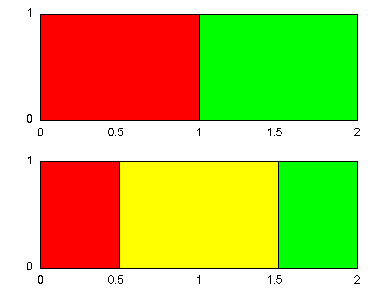Our results demonstrate that combination of preferred Chinese colors, namely
red and green,
yields yellow color. In the following, we show how these findings may explain
the phenomenon of color preference in Chinese.
Yellow color unquestionably has been associated with
Chinese nation. Although there is actually only one "human race" –
Homo Sapience
species – mankind always has been classified in according to
melanin content of the their skin. Nations from Southeast Asia tend to have
extra layer of outlying skin that produces a yellowish tint1. Thus, Chinese
belong to "yellow race". Consequently, Chinese are often called by various
nicknames that incorporate word "yellow" or its derivatives.
But more important is that, according to the ancient
Chinese legend, about
5,000 years ago, Huang Di, the Yellow Emperor, happened to rule part of the
Yellow River valley2. He and another leader, Yan Di, or the Fiery Emperor, are
said to made great contributions to the progress of civilization. Today,
Chinese all over the world regard them as their earliest ancestors, calling
themselves "Yan-Huang's descendants". Accordingly, numerous classical Chinese
tractates and tales are in one or another way associated with the Yellow
Emperor.
Thus, very interesting picture emerges. On one side, we
have single, and most
prominent, yellow color. On the other hand, this color may be considered as a sum
of two other colors, namely red and green, as we showed in the Results section.
In other words, using conventional Chinese methodology, the combination, or the
union, of red and green gives rise to yellow. In fact, the whole issue becomes more
and more reminiscent of the traditional
Yang
and
Yin
concept, in which each element
is opposite and complementary to its counterpart while together they constitute
ch'i
- a
material force that governs the universe, and from which man and all other
phenomena come. It is widely accepted that balance of
ch'i
is crucial. In men moral and
physical health come from a proper balance of
yin
and
yang
. Analogously, a global
equilibrium of red and green (that unite to generate yellow) is essential for a
well-being of Chinese nation.
Taken all this into account, our results strongly suggest that
red
+
green
=
yellow
paradigm we have described is nothing else but a linear transformation
(from transcendental to spectral domain) of the ancient Chinese
yin
+
yang
=
ch'i
concept. Moreover, we notice that manifestations of this
transformation are not solely related to the realm of Chinese decorative
culture. Leading structures of Chinese society, probably being aware of deep
roots of the color paradigm, are trying to maintain a proper balance of red
and green at all basic levels of China existence. For example, presently "Red China" is
essentially the last country in the world that does not abandon the "Red Symbolism"
and still maintains "Red Ideals" as an integral part of its regime. In the same
time, China is surely one of the most "green" countries in the world. Recall that only in
China there is a death penalty for poaching or killing of some protected animal species3! And only in China the government really tries to control its population
birth rate, using strict, but effective measures! So, the vital balance of red
and green is supported both at micro-levels as spectral content of a regular environment and at macro-levels in social, political and economical spheres.
In summary, our demonstration of the origin of color preferences in Chinese nation allowed us to reveal some interesting (and unexpected) features of Chinese culture.
|

